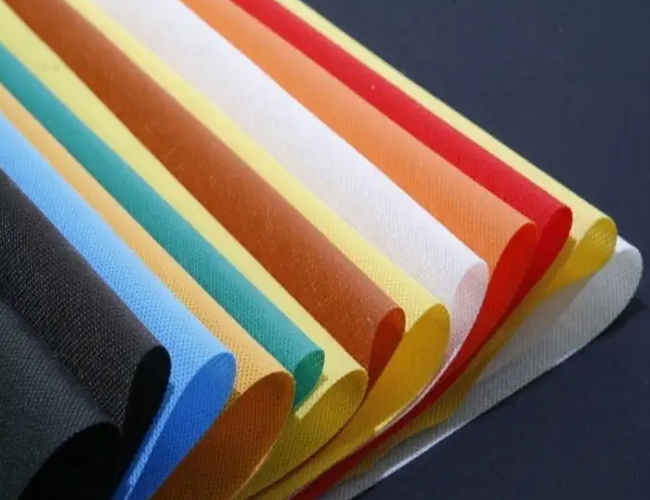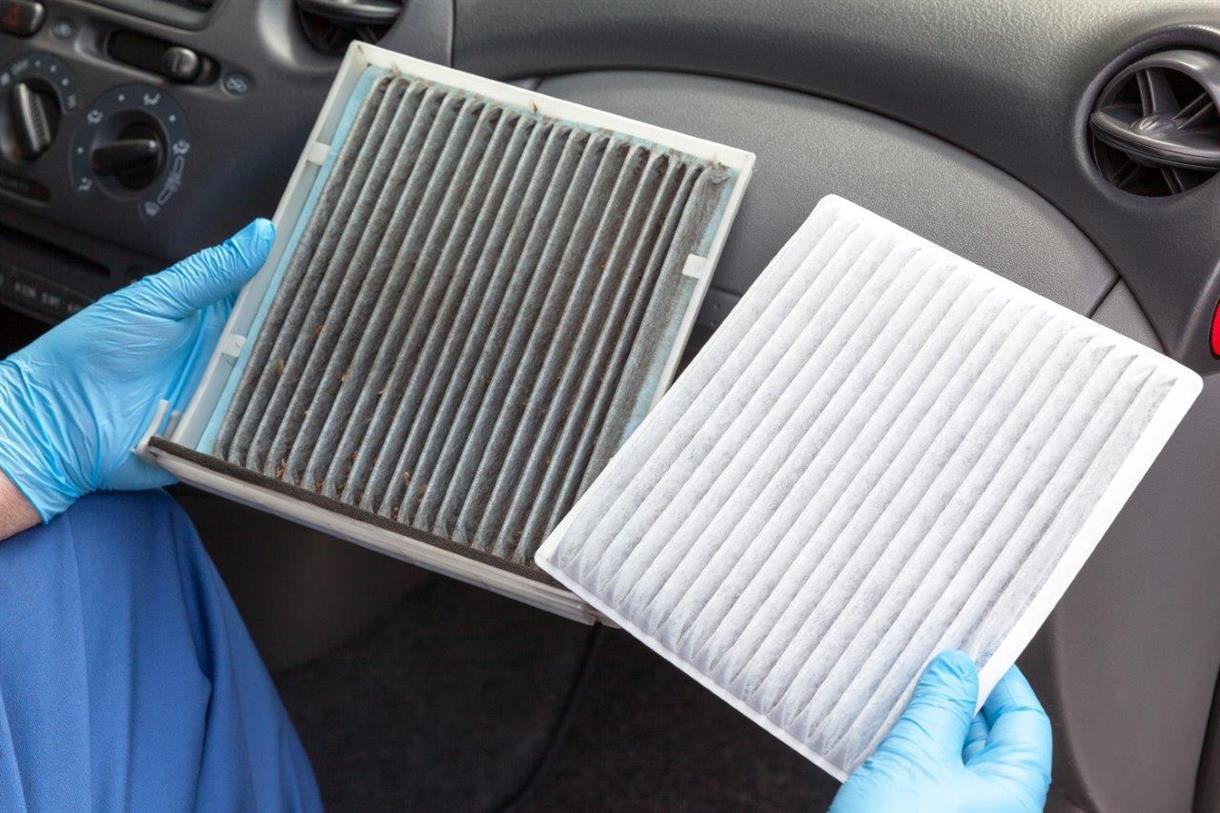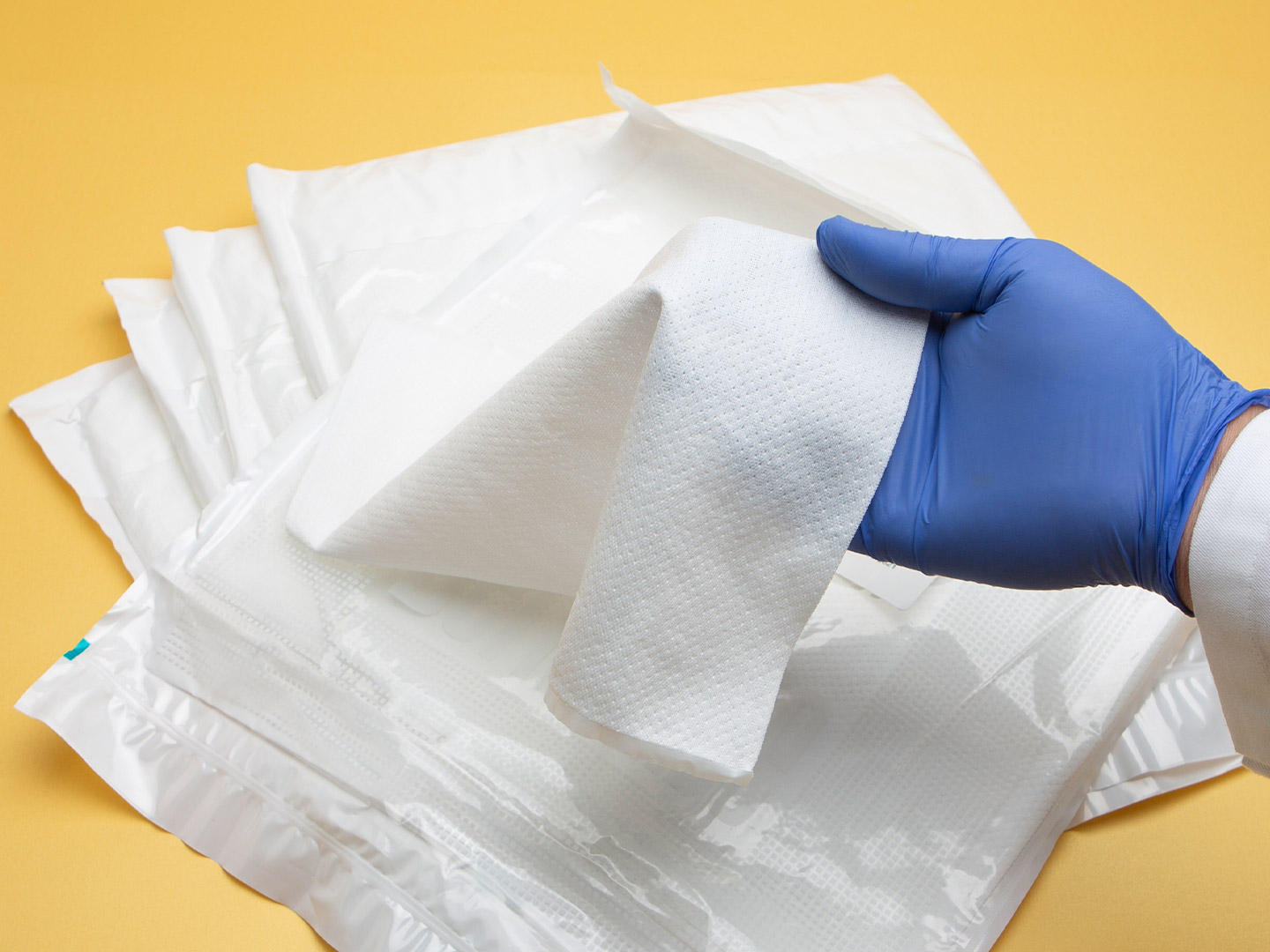
SMS nonwoven is actually a fabric made of a mixture of three nonwovens, which are: spunbond nonwoven and meltblown nonwoven. These two non-woven fabrics are divided into three layers, spunbond non-woven fabric is distributed in the upper and lower two layers, the middle is meltblown non-woven fabric. These three fabrics are a new type of composite material made by the process of hot rolling of the fiber web, and are widely used in the fields of filtration materials, absorption materials, medical materials, sanitary materials, and disposable materials.
The method of manufacturing sms nonwoven fabric. The method includes the following steps:
(1) preparation of spunbond layer fiber network. The spunbond raw material polypropylene and spunbond masterbatch are mixed, extruded and melted, spun and split into a web to obtain a spunbond layer fiber web.
(2) preparation of meltblown layer of fiber network. The meltblown raw material modified polypropylene and meltblown masterbatch are mixed, extruded and melted, spun and laid to obtain the meltblown layer.
(3) Bonding. Using the meltblown layer as the middle layer and the spunbond layer as the upper and lower layers, the three layers are hot pressed and bonded to obtain the sms type nonwoven fabric.
G&F's SMS nonwoven has the following characteristics and can be processed in different ways.
1. Light weight: With polypropylene resin as the main raw material, the specific gravity is only 0.9, only three-fifths of cotton, fluffy and good handfeel.
2. Softness: It is composed of fine fibers (2-3d), formed by light point heat fusion bonding. The product is moderately soft and comfortable.
3. Water absorption and breathability: polypropylene slices do not absorb water and have zero moisture content. The finished product has good water absorption ability and consists of 100% fiber.
4. Non-toxic and non-irritating: The products are produced with food-grade raw materials that meet FDA standards, no other chemical ingredients, stable performance, non-toxic, non-odorous and non-irritating to the skin.
5. Antibacterial and chemical resistant: polypropylene is a chemical passivation substance, which will not be insects and can separate bacteria and insect infestation in liquid. The finished product is antibacterial, alkali corrosion, and will not affect the strength due to erosion.
6. Antibacterial activity. The product contains water, can be separated from the liquid bacteria and insects erosion, will not be moldy.
7. Good physical properties. Spun from polypropylene directly into the network thermal bonding, product strength is better than ordinary short fiber products, strength without direction, longitudinal and transverse strength is similar.
1. Various special treatments are applied to nonwoven fabrics to meet customers' requirements for various special properties of nonwoven fabrics. The treated nonwoven fabric has anti-alcohol, anti-blood and anti-oil functions and is mainly used in medical surgical gowns and surgical pavement sheets.
2. Anti-static treatment: Anti-static nonwoven fabrics are mainly used as materials for protective products with special environmental requirements for static electricity.
3. Water-absorbent treatment: Water-absorbent nonwoven fabrics are mainly used in the production of medical supplies, such as surgical cavity towels, surgical padding sheets, etc.
4. Flame retardant treatment: Flame retardant nonwoven fabrics are widely used in furniture products and aviation supplies.
5. Anti-bacteria and anti-odor and photocatalytic effect treatment: These nonwoven fabrics are mainly used in the field of household products.
6. Anti-UV treatment: Anti-UV and anti-aging nonwoven fabrics are mainly used in agricultural coverings, car covers and other fabrics that require sun protection and anti-aging effects.
7. Aromatic agent treatment: scented nonwoven fabrics are applied to sanitary products (with mint flavor, lemon flavor, lavender flavor, etc.).
Detailed specifications of SMS nonwoven fabric.
Material: 100% polypropylene fiber
Weight: 15-180gsm, can be customized
Width: 160cm--320cm
Type: SMS, SMMS, SMMMS, SSMMS, SSMMMS
Color: blue/white/yellow/green/color
Depending on the thickness, SMS nonwoven materials can be used in different areas.
1. Thin SMS non-woven fabric (10-25gsm) is especially suitable for the hygiene market because of its waterproof and breathable nature, such as for sanitary napkins, sanitary pads, baby diapers, anti-side-leakage edge and backing of adult incontinence diapers, etc.
2. Medium thickness SMS nonwoven fabric (25-50gsm) is suitable for medical applications, such as surgical gowns, surgical wraps, surgical hoods, sterilization bandages, wound patches, plasters, etc. It is also suitable for industrial applications, such as overalls and protective clothing, etc. With its good isolation performance, SMS products, especially those with triple resistance and anti-static treatment, are more suitable for use as SMS products have been widely used in the world because of their good isolation performance, especially those with triple resistance and anti-static treatment.
3. Thick SMS products (>55gsm) are widely used as high-efficiency filtration materials for various gases and liquids, and are also excellent high-efficiency oil-absorbing materials for industrial waste water degreasing, marine oil cleaning and industrial wipes.
4. Medical nonwoven SMMMS, using 100% polypropylene slices as raw material, non-toxic, no fiber shedding, high effective bacteria blocking rate; good uniformity and fullness of the fabric surface, which can effectively improve product quality.
SMMMS can replace cotton fabric fabric, with soft, delicate handfeel and excellent skin-friendliness. The spunbond layer consists of continuous filament, with good breaking strength and elongation. The meltblown layer consists of continuous ultra-fine fibers, which have good barrier effect on moisture, bacteria and dust. It has high water pressure resistance and good air permeability, good acid and alkali resistance. Applicable to a variety of sterilization methods such as high and low temperature, stored under qualified conditions, sterile validity up to 180 days. Single-use, no need to recycle and wash, effectively prevent cross-infection in hospitals, reduce the hidden cost of treatment and improve infection control rate; meet environmental requirements, easy to degrade or incinerate; no multiple use breakage consumption.
The triple resistance nonwoven SMMS is made of spunbond nonwoven + meltblown nonwoven + meltblown nonwoven + spunbond nonwoven with four layers of fiber webs hot rolled. It has all the characteristics of ordinary SMMS nonwoven fabric; alcohol resistance up to grade 10 (i.e. 100% alcohol resistance); anti-static ability up to 108-1012; oil-proof; plasma-proof. It is mainly used in surgical gowns, surgical hole towels, surgical wrap, medical bed sheets, hand washing clothes, isolation clothes, laboratory clothes, senior protective clothing and other protective series products, and can be made in different colors according to different customers' preferences.
The fabric used in the market is mainly PP polypropylene or SMS or ordinary laminated non-woven fabric (PP + PE film), with a general weight of 35-50g/m2, excellent protection performance, breathable and comfortable. There are also microporous protective clothing main material using laminated non-woven fabric (PTFE composite fabric), conventional gram weight 80-100g/m2, with microbial penetration resistance, good blood permeability and other characteristics.
Meltblown polypropylene nonwoven (M) has the advantages of good uniformity, high filtration efficiency or high barrier capacity. Due to the low strength of meltblown fibers and insufficient bonding strength between fibers, it has poor mechanical properties, little elongation and no abrasion resistance. Therefore, it is generally difficult to use independently before treatment. In contrast, spunbonded polypropylene nonwoven(s) have high strength and good abrasion resistance, but lower uniformity and filtration accuracy than meltblown nonwovens. If the advantages of the two are combined to achieve exactly the effect of complementary advantages, this nonwoven is SMS nonwoven. In addition, there are also SM, SMMS, SSMMMS and other products.
Characteristics of nonwoven fabrics: Durable, disposable. Insulation, non-conductive. Softness, rigidity, stiffness. Fineness, swelling. Filtration, breathable and impermeable. Elasticity, stiffness. Light, loose, warm. Waterproof and moisture permeable. Ironed, sewn, molded. Flame retardant, anti-static. Water permeability, water resistance, abrasion resistance. Wrinkle resistant, good elasticity, high moisture absorption, water repellency.
1. Light weight: Made of polypropylene resin, the specific gravity is only 0.9, only three-fifths of cotton, with fluffiness and good hand feel.
2. Soft: Made of fine fibers (2-3D), lightly bonded with hot melt. The finished product is moderately soft and has a comfortable feeling.
3. Water repellent and breathable: Polypropylene slices do not absorb water, and the water content is zero, so the finished product has good water repellence.
4. Non-toxic and non-irritating: The product is produced with FDA food-grade raw materials and does not contain other chemical ingredients, with stable performance, non-toxic, odorless and non-irritating to skin.
5. Anti-bacteria and chemical resistance: Polypropylene is a chemically blunt substance, will not be insects, and can isolate the existence of bacteria and insects within the liquid erosion; finished anti-bacteria, alkali corrosion, not due to erosion and affect the strength.
6. Good physical properties: spun polypropylene is directly laid into a network of hot bonding, the strength of the product is better than the general staple fiber products, the strength of non-directional, longitudinal and transverse strength is similar.
At present, the main processes for manufacturing sms nonwovens are "one-step", "two-step" and "one-and-a-half-step" methods:
1. One-step method
This process is characterized by the use of raw material slices. Using two processes, spunbond and meltblown, the raw material is directly melted and spun into a web. With a reasonable arrangement of the spinning system engineering of different processes, it is possible to make products with different structures. After laminating the layers of fiber webs, they are generally cemented into cloth by hot rolling machine. The "one-step" method is characterized by the direct spinning of the melt into a net, the state of each spinning system can be independently adjusted. The production process is highly controllable, with good sanitary conditions, high running speed and the ability to adjust the ratio of each layer of the fiber network at will. Various specifications of sms nonwoven can be produced, which is the mainstream process today.
2. Two-step method
When producing sms nonwoven fabric by two-step method, the finished spunbonded fabric and finished meltblown fabric are rewound in a certain order, laminated in order, and then cemented by hot rolling machine and laminated into SMS products. The "two-step method" is characterized by simple equipment and low cost. In fact, the "two-step" process is also a widely used laminated lamination technology. Other materials can be laminated, and the three layers can be cemented together with different materials and methods, such as ultrasonic and hot melt adhesives.
3. One and a half step method
In the two-step process, the so-called "one-and-a-half-step" lamination process can be derived by replacing the meltblown fabric with a meltblown layer produced on site. The spunbond is used as a base layer and a top layer by two rewinding devices, and the intermediate layer of meltblown fabric is spun directly from the meltblown system, placed on the base layer of the spunbond, and then covered with the top layer of spunbond, preferably cemented by a hot rolling machine.
For more information about SMS nonwoven fabric, G&F has a complete range of spunbond nonwoven fabrics with sufficient production line and quality assurance, welcome to visit our website for more details.
All Rights Reserved: https://www.groupgf.com/info-detail/sms-nonwoven-fabric
Copyright Notice: This is an original (translated) article from G&F Group Inc., please indicate the source from G&F Group Inc.. If there is any infringement, please contact us first.
 Nonwovens in daily life ----- filtration
Nonwovens in daily life ----- filtration
 Nonwovens in daily life ----- automotive
Nonwovens in daily life ----- automotive
 What is SAP – superabsorbent polymers
What is SAP – superabsorbent polymers
 The Future of Global Nonwoven Wipes to 2029
The Future of Global Nonwoven Wipes to 2029